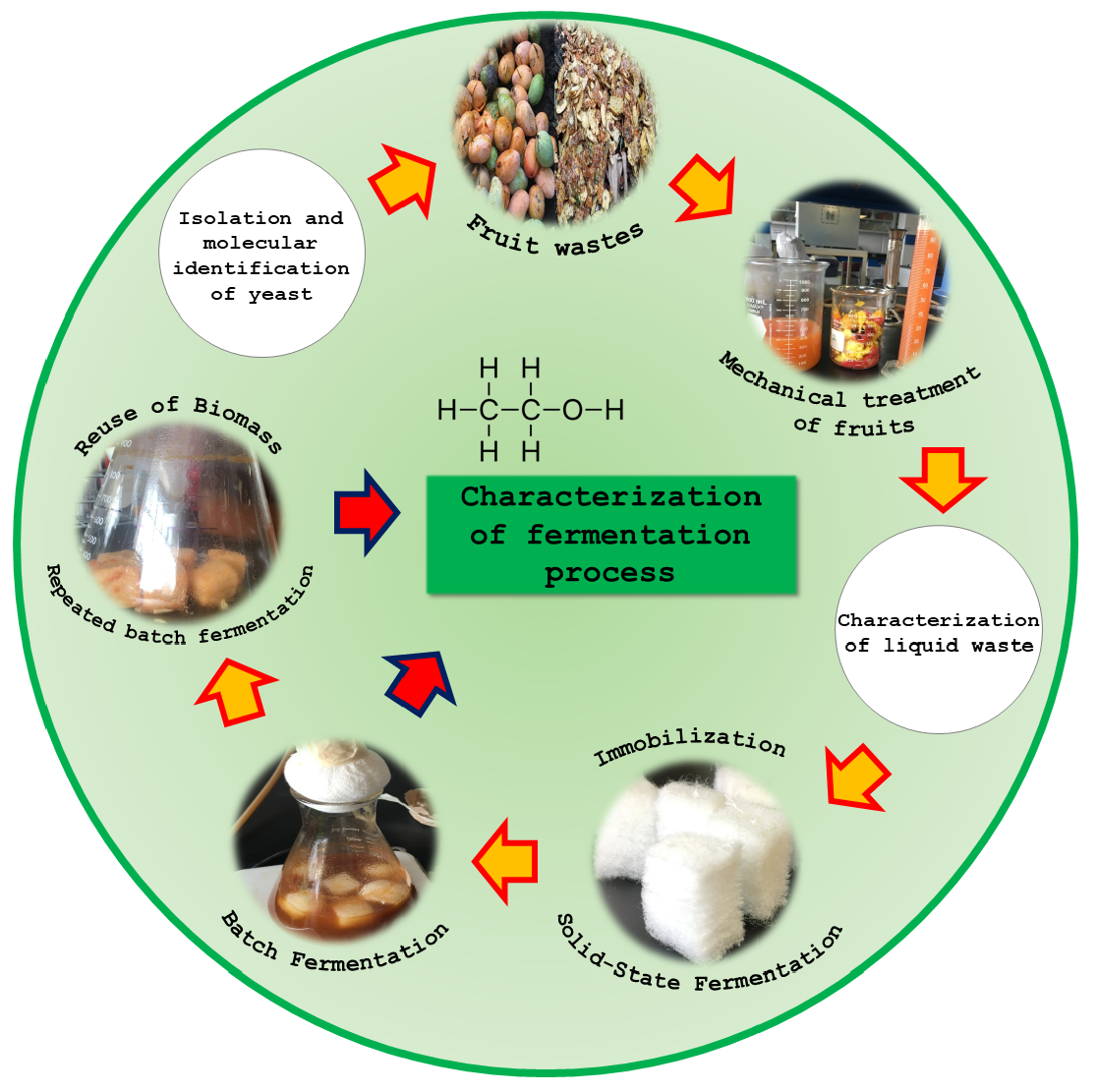 |
|
In the Mexican croplands are generated large amounts of agroindustrial wastes that are usually not exploited. Damaged fruits wasted in the municipality of Tres Valles, Veracruz, are an excellent feedstock to produce ethanol, since do not need a sophisticated pretreatment and have high fermentable sugar concentrations. In this work is described ethanol production from damaged fruits by a new strain of Saccharomyces cerevisiae isolated from agave sp. wastes. Fermentations were carried out in batch and repeated batch cultures using biocatalysts formed by S. cerevisiae AP1 cells immobilized into alginate-coated polyester fiberfill. Biocatalysts showed a high fermentative capability at reducing sugar concentrations higher than 30 g L-1. In batch cultures, with 32.58 g reducing sugar L-1, was produced up to 15.39 g ethanol L-1 at 16 h, with a volumetric productivity of 0.962 g L-1 h-1 and a fermentation efficiency of 94.77\%. Instead in a 5-cycle repeated batch fermentation, with a reducing sugar content among 30 to 43 g L-1, ethanol production in each cycle was fast, higher than 15 g L-1, with fermentation efficiencies higher than 80\%, and with volumetric productivities from 2.5 to 2.9 g L-1 h-1 after second cycle. Afterwards five cycles of repeated batch fermentation, total ethanol production was 95.41 g L-1 in just 44 h process.
Keywords: ethanol, Saccharomyces cerevisiae, immobilization, damaged fruits, polyester fiberfill.
|
|
 |

